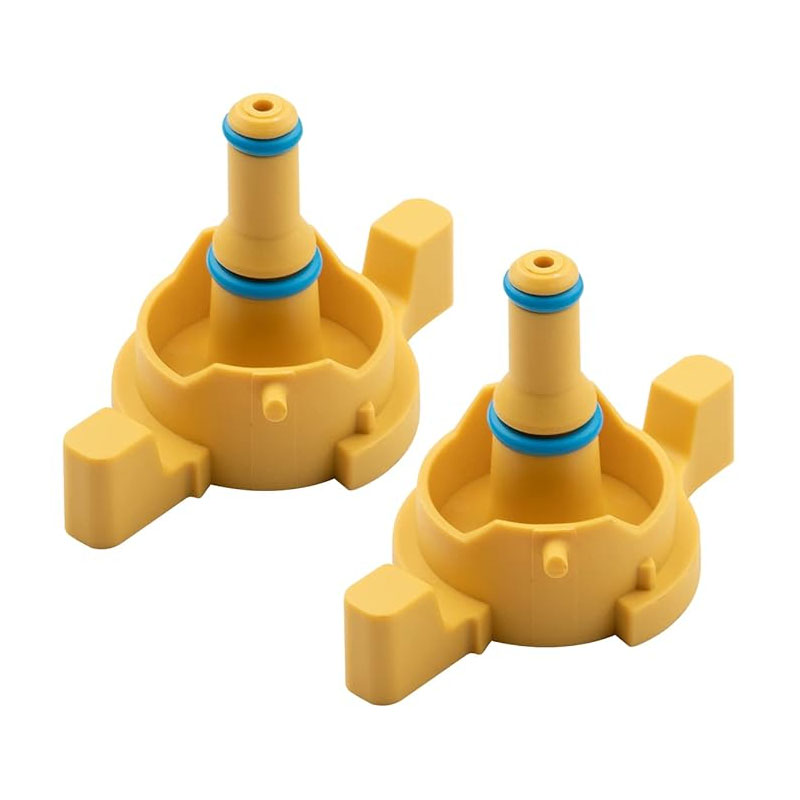leaking oil drain plug
Understanding and Addressing Leaking Oil Drain Plugs
Oil drain plugs are essential components of any vehicle’s engine oil system. They play a crucial role in maintaining the integrity of the engine by securing the oil pan, preventing leaks, and ensuring the proper functioning of the lubricating system. However, one of the common issues that vehicle owners may face is a leaking oil drain plug. This article delves into the causes, consequences, and solutions regarding leaking oil drain plugs.
Causes of Leaking Oil Drain Plugs
1. Improper Installation One of the primary reasons for an oil drain plug leak is improper installation. When the plug is not tightened adequately or is over-tightened, it can create gaps or damage the threads, leading to leaks.
2. Worn Out Washer Most drain plugs come with a washer that helps create a tight seal. Over time, this washer can become brittle, worn, or damaged, resulting in a poor seal and allowing oil to escape. It’s essential to replace the washer whenever you change your vehicle's oil to ensure a secure fit.
3. Corrosion Drain plugs, particularly those made of metal, can corrode over time. Factors like exposure to salty environments or chemicals can accelerate this process, weakening the material and making it susceptible to leaks.
4. Oil Pan Damage If the oil pan itself is damaged, the drain plug may not seal properly, leading to leaks. Damage can occur from impacts, rust, or poor maintenance, affecting the overall performance of the oil system.
5. Overfilled Oil In some cases, if the oil capacity is exceeded during an oil change, the excess pressure can cause leaks at the drain plug. This situation can also lead to other engine problems if not addressed quickly.
Consequences of Leaking Oil Drain Plugs
leaking oil drain plug

Ignoring a leaking oil drain plug can lead to several serious consequences. Firstly, it can cause a significant loss of engine oil, which may result in inadequate lubrication and eventually lead to engine damage or failure. Running an engine with insufficient oil can cause parts to grind against each other, leading to overheating and severe wear.
Moreover, leaking oil poses environmental risks, as oil spills can contaminate soil and waterways. It also increases maintenance costs, as regular checks and repairs will be needed. A visible oil leak can also be a red flag for potential buyers if you plan to sell the vehicle, as it reflects poor upkeep.
Solutions to Fix Leaking Oil Drain Plugs
1. Tightening the Plug If you notice a small leak, the first step is to check and tighten the oil drain plug. Use the appropriate tools to ensure it is securely fastened but be cautious not to overtighten it, which can cause further damage.
2. Replace the Washer If the seal seems compromised, replacing the washer is often a simple solution. A new copper or rubber washer can provide a better seal and prevent leakage.
3. Inspect for Damage Regular inspections for corrosion or other forms of damage to the drain plug and oil pan can help identify leaks early. If damage is found, consider replacing the affected parts.
4. Professional Help If DIY solutions don’t work or if the leak persists, it may be time to seek professional assistance. A qualified mechanic can diagnose the issue and make the necessary repairs, ensuring your vehicle’s oil system functions correctly.
Conclusion
In conclusion, a leaking oil drain plug can be a significant issue that should not be overlooked. Understanding the causes, consequences, and solutions can help you address this problem effectively. Regular maintenance, including oil changes and inspections, can prevent a variety of issues related to oil drain plugs. By taking proactive steps, you can ensure the longevity of your vehicle’s engine and maintain its performance while minimizing environmental impacts. Remember, an ounce of prevention is worth a pound of cure—regular checks can save both time and money in the long run.
-
The Ultimate Guide to Boat Propeller Bearings and Trailer Wheel Bearings
News Jul.31,2025
-
The Essential Guide to Marine Bearings and Boat Trailer Wheel Bearings
News Jul.31,2025
-
The Complete Guide to Heavy Duty Seals: Protecting Doors and Spaces Efficiently
News Jul.31,2025
-
Essential Guide to Marine Shaft Bearings and Boat Trailer Axle Bearings
News Jul.31,2025
-
Comprehensive Guide to Marine and Trailer Bearings for Safe Boating and Transport
News Jul.31,2025
-
Comprehensive Guide to Automotive Oil Seals: Protecting Your Engine and Shafts
News Jul.31,2025
-
Understanding Automotive Oil Seals: Essential Components for Engine and Shaft Protection
News Jul.30,2025
Products categories















